1936 Alfa Romeo 2900A – Supreme Road Racer
Story by Ed McDonough
Views differ as to the meaning of the phrase…’the good old days’. In this story, it means when you could buy a new car from your local dealer and later discover it had won the Mille Miglia!
In April 1936 there were three works Alfa Romeos entered in the Mille Miglia. The three team cars were very basic with functional spider bodywork and cycle wings, and the bodies were known as the Botticella, an Italian term for cask or keg which referred to the shape of the machine, and it was meant to be a term of affection.
The twin aero-screened cars were to be driven by Antonio Brivio and mechanic Carlo Ongaro, in car number 75, Farina and Meazza in number 82, and Pintacuda and Stefani in 79. Alfas had won the 1000 mile thrash around Italy for the last four years, with Pintacuda taking victory in 1935.
Though Brivio had started some minutes ahead of Pintacuda, last year’s winner had caught up with him as they went over the Futa Pass on the southward journey some miles past Bologna. But then Pintacuda had fuel problems which caused a long delay, and by Rome, the halfway point, Biondetti in a private Alfa was ahead of the Scuderia Ferrari run works Alfas. Brivio pushed harder and harder on the northern return leg, going into the lead. Then at Peschiera, near the finish, the battery came loose and fell off. Ongaro got it back in but they had no lighting. Then Alfa Romeo driver Count Trossi, who was spectating nearby, went and got his Packard and drove behind Brivio to provide some lighting for the final miles. Brivio and Ongaro crossed the line at Brescia just thirty seconds ahead of Farina, and then came Pintacuda the same distance behind Farina…after 1000 miles.




Shortly after the Mille Miglia, the three cars were rebuilt, two being sent to South America. Serial number 412004 went on to do the Spa 24 Hours with Farina and Siena driving where it was going very well until retiring in the 9th hour. Then Farina won the Freiburg Hillclimb in August. It was often difficult to identify these cars as the rules allowed them to run with or without windscreens or fenders at some events. And there was also the old tradition of swapping serial numbers round as well! Severi drove 412004 to 4th at Modena in September with no lights, no fenders and one aero-screen.
As the 1936 racing season drew to a close, two cars, including one of those returned from South America, were rebodied and appeared on the Alfa Romeo stand at the Milan Auto Show in October. One of these cars was listed as 412006, and on the rear engine bearing chassis member was stamped the number 412006, with the 6 clearly stamped over a number 4. Also to be found on the engine was SF54, Scuderia Ferrari’s own number…54 was the number which had been on 412004. The car was then again re-bodied for the Paris Auto Show in November. On December 4, 1936 one Alfredo Brioschi bought this car, now listed as 412006 with a sporting, two-tone body with the Milan registration number 55316. It was sold to him as a brand new car. Ah, the good old days!
Signor Brioschi retained the car for some five years, then sold it to Vittorio Roncoroni who then sold it to Jean Studer in Switzerland, who raced it and believed it to be 412006. It acquired larger superchargers, and then was sold on to Hardy Fortmann in 1947 who also raced it before moving it on to Alfred Senften, who had Martin of Berne re-body it once again with a lighter, lower spider body, circular grill and cycle wings which turned with the steering. It went to Hans Matti in 1971, then to France and the UK and into the ownership of Matt Grist and his father Paul who have restored it with a Botticella body as it was when raced in period.
Mille Miglia Winning Alfa Romeo 2900A – Car Profile Page Two
Paul Grist related the tale of the time they took the car on the Mille Miglia Retro some years ago. They made a roadside halt near Modena, and an old man in suit and dark glasses got up from his chair at the cafe to come over and reminisce about the car and the ‘old days’. As they drove off, then young Matt asked Paul who the ‘old geezer’ was. The answer – Enzo Ferrari.
It was during the Grist ownership, with help from Simon Moore, that the real identity was confirmed. The car had the original engine block and was essentially unmolested, despite its transformations. None of the original Botticella bodies had survived but the Grists built one, liking the idea of being able to remove the bits when necessary.
My first acquaintance…behind the wheel…took place appropriately enough at the Brooklands circuit where most of the significant British pre-war racing took place. Though the circuit never re-opened for racing after WWII, much of the original premises survive, along with sections of original track, including the fabulously steep banking. The Alfa never ran here but it was wonderful to be able to test it on this ‘holy’ ground.




If you have never heard the whine and whoosh of a pair of superchargers on a larger, pre-war Alfa engine, then you have clearly missed out. The sound that escapes from a Bugatti or a Bentley is intriguing, but give me an Alfa every time. This car is incredibly visceral. There is a huge three-spoke wheel right in your face, no more than fourteen inches away, behind which is located one of the twin aero-screens as fitted on the car in 1936. If you ask yourself which cars can offer such a physical and sentient experience, the 2900 has to be near the top of the list.
I had to be on my toes, having been told that at the moment it would jump out of first gear if the gear lever was not held in place. Once the eight cylinders have burst into life, you settle in, trying to get used to being so close to the steering wheel. Then there are some surprises. What on the surface looks like a pretty heavy car turns out to handle and respond as if it was several hundred pounds lighter. The gear pattern is slightly unorthodox, with first being over to the right not the left, and reverse takes some practice but the box is a miracle of engineering strength. Once the first gear glitch is remembered, the box is easy to use, changes being easy and straight-forward. This means the car’s very considerable torque is accessible, and the car’s acceleration is stunning.
My second drive was near the Grist workshop, on proper country roads where the handling and braking could be tested…if not fully…at least to a very satisfying degree. The big Englebert racing tires give good grip, and on damp and bumpy roads, the 2900A could be truly wound up, even producing a hint of rear end slide which I had seen the Grists do so well through Arnage at Le Mans in 2002.
Good old days indeed….thanks Matt and Paul.






[Source: Ed McDonough; photo credits, Alfa Romeo and P. Collins]


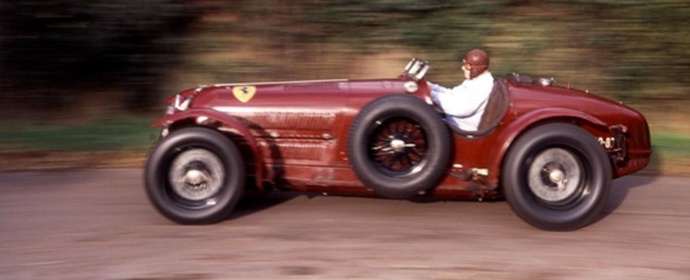
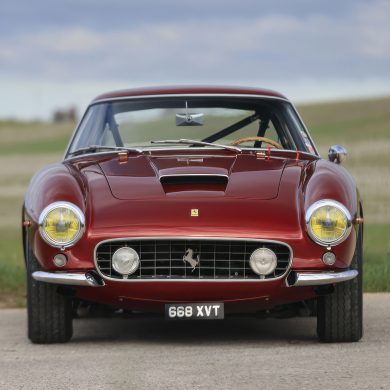

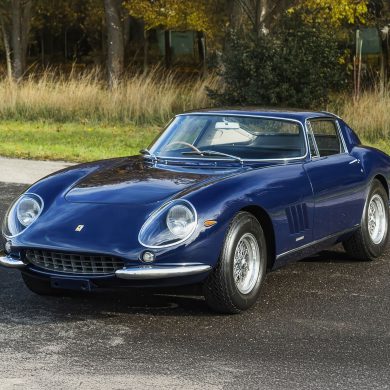
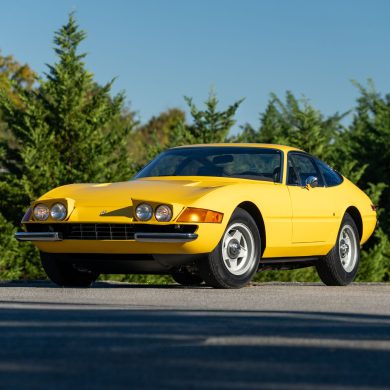
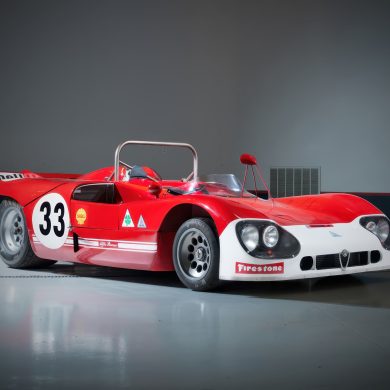
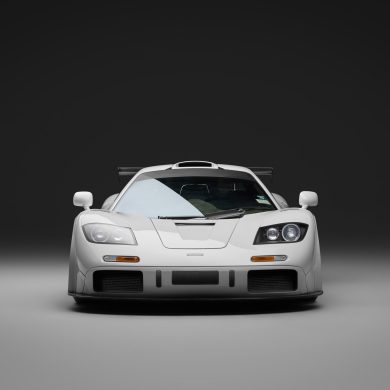


Thank you very much for that excellent article
It’s not fair that Ed gets to drive all those vintage classics. Despite that it was a great article and photos.
What a great car and a superb article/pictures. Thanks SCD and Ed McDonough!
A photo shows a huge 4 spoke wheel while the article mentions a huge 3 spoke wheel, what givs?
Mr. McDonough-
I was going thorough some old magazines of mine and came across the article you did for Vintage Racecar on the 1958 Reims event. I was wondering if you also have any recollections/photos of the 12 hour GT race? I am a builder/collector of models of cars that Dan Gurney drove in his career (80+ models built, 20 or more waiting) and I plan to build one of the #80 Ferrari 250GT TdF that he drove with Andre Guelfi at Reims. The car was severely damaged by Guelfi during the race. I have found 2 reference photos online or through online contacts and one appears to show a white stripe of undetermined size and shape, while another picture does not indicate any white at all. By any chance do you have a way to solve my dilemma?
I know that you no longer post on FerrariChat, so I will also try to contact you through other means; my apologies in advance for any duplicate messages.
Thank you.
Tom Gee
2938 Kensington Trace
Tarpon Springs, FL 34688
USA
[email protected]
[email protected]